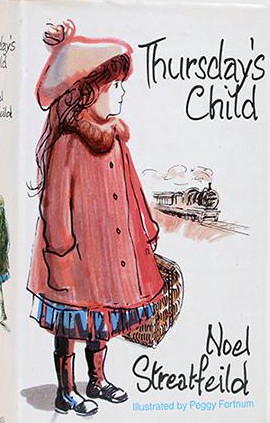Inspiring Young Readers
 posted on 23 Nov 2016
posted on 23 Nov 2016
Peggy Fortnum
The reputation of Peggy Fortnum as an artist and children’s book illustrator will inevitably rest upon her drawings of Paddington Bear. Her death in March of 2016 triggered a whole host of affectionate obituaries and memories from people who loved her work but also felt they owed her a debt for the part she played in bringing to life a key character of their childhood story world. And it is undoubtedly true that her realisation of the bear from Peru is just about perfect and captures the lovable, mischievous and eccentric character of Paddington in a way that brings a whole other dimension to the written stories.
But it would equally be a mistake to miss out on Fortnum’s other masterful book illustration just because of the enormous shadow cast by Michael Bond’s creation. Born in 1919 she went to art school as the Second World War was breaking out and her studies were curtailed by a serious injury she received as a member of the Auxiliary Territorial Service. When she was finally recovered and following a prolonged period of recuperation she went back to art college, signing up as a student at the Central School of Arts and Crafts in London where she became friendly with that other great children’s book illustrator, Judith Kerr.

Initially she found work teaching and doing textile design before she got her break as an children’s book illustrator. Her first commission was Mary Moore’s Dorcas the Wooden Doll which was so successful that many others followed – including illustrating books by Oscar Wilde, P.J.Lynch, Leila Berg, Noel Streatfeild, Jane Gardam and many others. Estimates seem to vary on the amount of books she illustrated in total but the lowest estimate I’ve seen puts it at 80.
She worked in black and white and developed what is most often described as a ‘loose style’ – the drawings look deceptively simple and sparse but do in fact carry just enough detail for the reader to use the drawings and text together to co-create the world they depict. Later colour fills for her drawings of Paddington Bear were done by other artists – she always preferred to stay with the original pen and ink as far as Paddington was concerned. For other books, her use of colour was always subtle and understated, often making use of watercolour washes.

In most of the books she provides drawings for the illustrations are not the stars of the piece – the author’s work remains paramount. However, I think the exception to this rule is with Paddington. I personally have no doubt that the charming stories of this bear would have remained precisely that, charming little stories. But with Peggy Fortnum’s illustrations alongside them they have become an international sensation – and now a multi-media one at that.

Fortnum is an artist it’s entirely possible you are familiar with without necessarily knowing it was her work you were looking at. She thoroughly deserves recognition for her part in the creation of the Paddington phenomenon but it would be a shame if we lost sight of what a great contribution she made to children’s literature on a much wider front.
Terry Potter
November 2016

